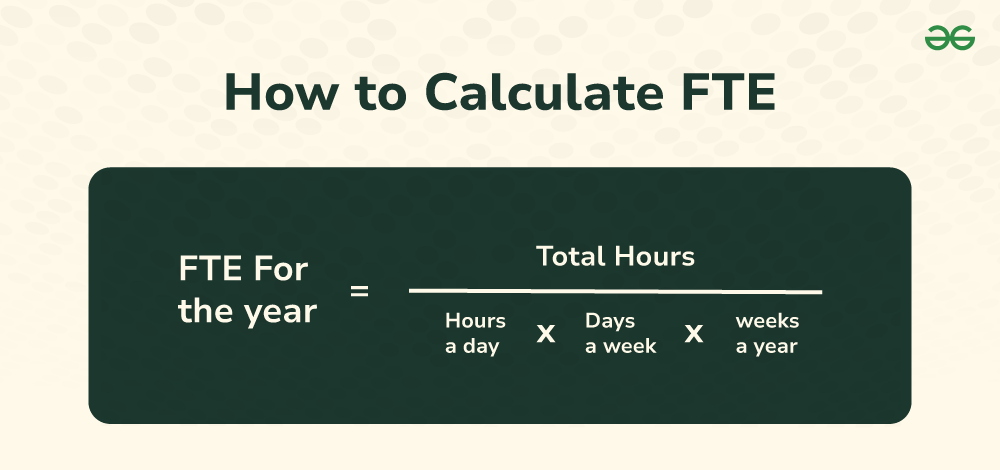
|
|
What does FTE stand for? FTE stands for full-time equivalent and it is the measure of how many total full-time employees or part-time employees add up to the full-time employees a company employs. In this article, we’ll delve into what FTE means, why it matters, and how to calculate it.
What is Full-Time Equivalent (FTE)?Full-Time Equivalent (FTE) represents a standardized unit of measurement that quantifies the productive capacity of employees. It answers the question: “How many full-time employees would be equivalent to the combined work of our current workforce?” FTE accounts for both full-time and part-time employees, allowing organizations to assess their staffing needs accurately. Why Calculate FTE?FTE is calculated because,
How to Calculate Full-Time Equivalent (FTE)The formula to calculate FTE is shown in the image added below:
Calculating FTE involves a straightforward process. Let’s break it down into four steps: 1. Count Number of Hours Worked by Part-Time EmployeesBegin by tallying the total hours worked by part-time employees. For example, if you have three part-time employees working 20 hours each per week, the total part-time hours would be 60. 2. Count Number of Hours Worked by Full-Time EmployeesNext, sum up the hours worked by full-time employees. If you have five full-time employees working 40 hours per week, the total full-time hours would be 200. 3. Add Total Hours Worked by Both Part-Time and Full-Time EmployeesCombine the part-time and full-time hours. In our example, the total hours worked would be 260 (60 part-time hours + 200 full-time hours). 4. Calculate Total FTETo calculate the FTE, divide the total hours worked by the number of available full-time hours in a year (usually 2,080 hours):
How to Calculate FTE ExamplesExample 1: What is the FTE of a workforce when they work 260 hours a year? Solution:
Example 2: If an employee works 80 hours in a month, and the full-time hours for that month are 160, then the FTE would be 0.5.
Example 3: Consider a company with:
ConclusionUnderstanding and calculating FTE is crucial for effective workforce management and planning. It allows organizations to compare workloads and to plan for future hiring needs. Remember, while FTE is a useful measurement, it doesn’t account for productivity levels, so it should be used as one of many factors in workforce management. FAQs on Full-Time Equivalent(FTE)What is 0.9 FTE?
What is the difference between FTE and headcount?
What does FTE 100% mean?
Can FTE be calculated for less than a full workweek (e.g., daily)?
What are some real-world applications of FTE?
Can FTE be greater than 1.0?
How does FTE impact budgeting?
What does a FTE of 1.0 mean?
How is FTE calculated?
Is FTE calculated monthly or annually?
|
Reffered: https://www.geeksforgeeks.org
| Mathematics |
Type: | Geek |
Category: | Coding |
Sub Category: | Tutorial |
Uploaded by: | Admin |
Views: | 13 |
